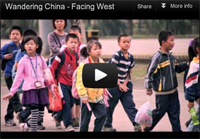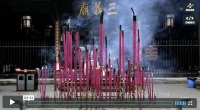From Beijing-based media group Caixin Online, a Chinese attempt to revitalise traditional media through integrated media platforms in reaching out to international audiences.
Roughly translated to Financial News and described as a muckracker by the Wall Street Journal, its partner centre is the Global Times): This almost self-reflexive piece considers the price of projecting national image through sporting infrastructure spec-ed for global mindshare and participation, a problem China does not share alone.
– – –
Empty Nest Syndrome for Post-Olympics Beijing
Beijing’s iconic Bird’s Nest stadium and Water Cube exemplify the high price paid to satisfy Olympic building dreams
By staff reporter Wang Yuqian
Source – Caixin Online, October 3, 2012

China’s national stadium. Source – Caixin, 2012
(Beijing) – First-time visitors to China’s National Stadium, or Bird’s Nest, are usually amazed by the grandeur and grace of this historic centerpiece built for the 2008 Summer Olympics in Beijing.
But for many Beijing residents, the Bird’s Nest is little more than a curious venue for a hodgepodge of infrequent recreational events and pop music concerts.
The stadium that seats 90,000 and cost 3.6 billion yuan hosted only a dozen events last year. Moneymakers included the Italian Super Cup football match, a stopover by athletes with the TTR World Snowboard Tour and a Rock Records 30th anniversary concert.
It was otherwise quiet except for tour groups and skiers and skaters who reveled in the manmade snow and ice that covered the field of the enclosed stadium every winter since 2010.
Yet the Bird’s Nest is relatively busy compared with other stadiums built for the Olympics in Beijing. Most are struggling to meet financial targets due to weak revenues from their main money sources – tourists and special events leasing.
An exception is the Water Cube, which hosted swimming events during the 2008 Olympics. Lin Xianpeng, a management professor at Beijing Sport University, said post-games revenues at the Water Cube have been “remarkable” if compared to other sports venues across the country.
Nationwide, only about one-third of all major sports venues break even every year, according to a Beijing Sports University report released last year. The rest lost a combined 280 million yuan in 2010 alone.
According to the National Audit Office, China splashed out nearly 19.5 billion yuan for new buildings, 36 venue renovations and 66 training centers to prepare for the 2008 games.
State agencies provided financial support based on the argument that civic pride attached to dramatic sports halls is worth the cost. But most private investors have steered clear.
Shrinking Ticket Sales
The Bird’s Nest and Water Cube, which occupy opposite sides of a giant square, are Beijing landmarks that attract busloads of tourists from near and far every day.
But the public’s passion for the Olympics held four years ago has been wearing off: The number of stadium visitors fell 40 percent in 2010 from the previous year, and another 30 percent year-on-year in 2011, BSAM Chairman Li Aiqing told the official People’s Daily last August.
Visits to the Water Cube have also declined, said Yang Qiyong, deputy general manager of National Aquatics Center Co. Ltd., the venue’s manager. Only 2.08 million people visited last year, down around 30 percent from the year before.
The Bird’s Nest “is definitely a must-go” for capital city tourists “but a glimpse from outside is enough,” said Ran Wenlan, a 61-year-old visitor to Beijing who lives in Chongqing.
Ran refused to buy a 50-yuan ticket for a chance to walk inside the structure, but peeked inside from outside a fence and took a photo from a pedestrian overpass nearby.
Indeed, tourist ticket sales account for a large but shrinking proportion of annual income for the Bird’s Nest. It provided up to 90 percent of the funds soon after the Olympics but fell to 42 percent in 2011, in part because revenue from other channels increased.
The stadium now has more than 500 licensed products on sale, which since 2008 have brought in more than 6 million yuan.
But the revenue pales in comparison with the stadium’s steep annual maintenance costs.

Source – Caixin, 2012
The Bird’s Nest spends about 80 million yuan a year maintaining the facility, Li said.
The Water Cube faces a similarly heavy burden: Yang said its 88 million yuan in revenues last year failed to cover costs topping 99 million yuan. Some 58 percent of the venue’s expenditures last year were tied to labor costs, which have been rising, and utility bills, Yang said.
The Bird’s Nest and Water Cube are also burdened with debts from their construction projects and post-Olympics renovations designed to prepare them for commercial functions.
“If not for debt servicing, both venues could have made a profit,” Lin said.
Beijing’s experience is not unique. Maintaining sports venues after an Olympics is a headache in host cities worldwide.
Athens, site of the 2004 Olympic Games, built 22 stadiums. All but one has been abandoned amid the country’s economic turmoil. With walls now covered by graffiti, these venues still cost US$ 124 million every year to maintain.
Commercial Flop
The Beijing municipal government hoped to minimize construction and maintenance cost of these stadiums by recruiting private investors.
Through a system referred to as the Public-Private-Partnership, a consortium led by the state-run investment firm CITIC Group won a tender in 2002 to build the Bird’s Nest.
Filed under: Beijing Consensus, Beijing OIympics, Caixin, Charm Offensive, Chinese Model, Domestic Growth, Economics, Finance, Influence, Mapping Feelings, Media, Modernisation, Nationalism, Public Diplomacy, Social, Sport, The Chinese Identity, China's Rise, Economics, Media, Olympics, Public Diplomacy, Sport












The Sharing Circle